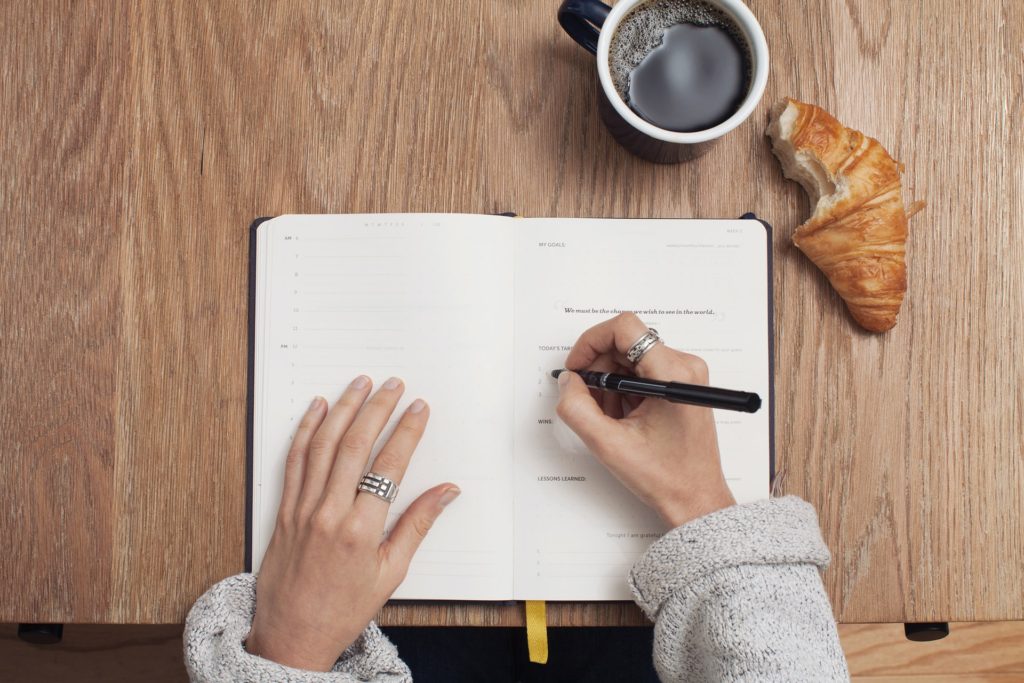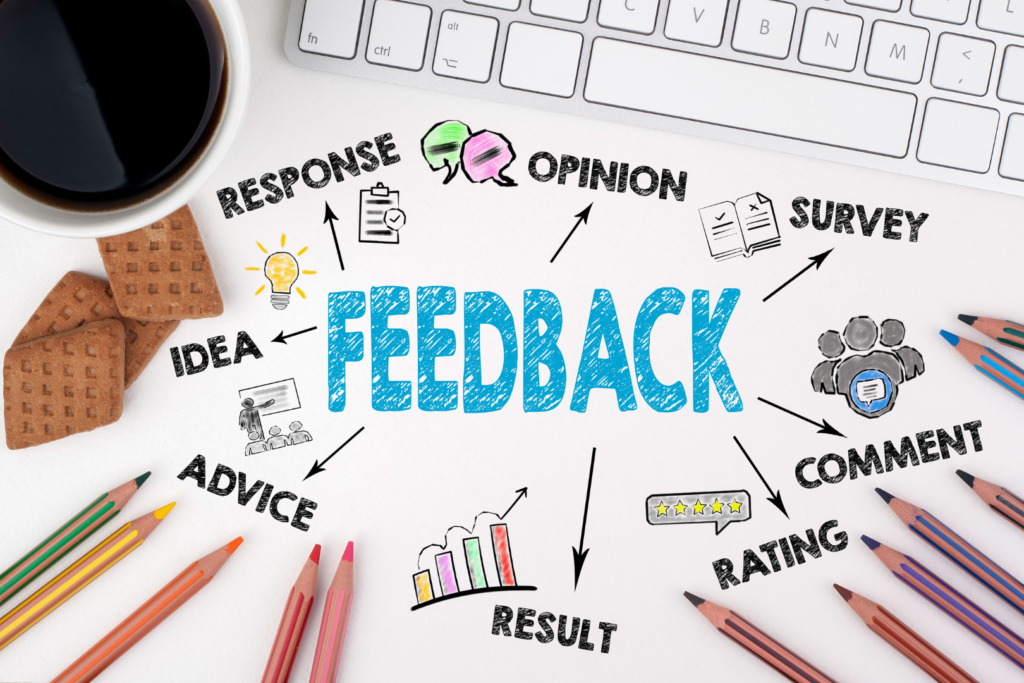This post may contain affiliate links, which means I’ll receive a commission if you purchase through my link, at no extra cost to you. Please read full disclosure here.

In this blog post, I share the different modes of teacher self reflection and provide real-life examples of these teacher self reflection practices in action.
In another blog post, I’ve talked about tips to help you continue teaching, and all those points are essential to keep you motivated and intentional as a teacher. Here, though, I want to focus on an essential skill you must develop at the very start of your teaching career: teacher self reflection.
Without reflection, you cannot improve as a teacher, or at anything. Reflection helps push you past the unintentional, hindering repetition that happens because you don’t know what else to do.
Not sure why your fifth period class lacks focus? Struggling with prolonged transitions? Constantly battling students to stop talking?
While reflection won’t magically fix these, these can all be observed and strategically attacked through the process of reflection.
Now, before diving into the tips for successful and effective teacher self reflection, it’s important to note there are different types of reflections.
There are four modes of reflections, as clearly described in the “Reflective practice” page on the New South Wales Education government site.
- Reflection-in-practice
- Reflection-on-practice
- Reflection-for-practice
- Reflection-within
All of these are undoubtedly important. However, I assert that reflection-on-practice is the most approachable during your first year of teaching.
If you’re anything like me, reflection-in-practice, in the moment, did not happen until I was more confident in the classroom. Until I felt like I learned how to force myself to breath, take a step back, and watch. The same with reflection-for-practice, which involved the first and the second together.
Perhaps reflection-within is approachable for first year teachers, but again I argue this comes with greater understanding of yourself as a teacher, and thus may come more often after a few months in the classroom.
Reflection-in-practice
As I said, this practice was much harder to do when I first stepped into my own classroom. Even with experience using this mode of teacher self reflection while student teaching, it was still a challenge. As a fully fledged teacher in my own classroom, I struggled to separate from the moment to reflect until a few months into my first year of teaching.
This mode became necessary on days when plans totally bombed, they just fell apart, the train derailed. Whatever metaphor you want to use. Reflection-in-practice needs to happen when things are going disastrously.
I distinctly remember a disastrous moment. At first, it seemed all was well. I reviewed the directions, handed out the supplies, and set students to work. Within minutes, student after student pelted me with questions.
“Ms. Kyra, what do we do?”
“Wait, I’m so confused! What are we doing?”
“Why do we need to do _____? Aren’t we working on _____?”
These questions were not limited to the few who typically ask for a bit more explanation. No, it was nearly everyone. My directions didn’t make sense, what I said out loud was completely different than what was on the paper. They were lost. Heck, I was lost!
In a moment of complete panic, I stopped everyone and said, “People! Stop. This is clearly not working. I messed up. I want us to analyze this story and consider how _____ affects the main character… How can we do that given the materials we have in front of us?”
This became one of the best moments that could have happened. Immediately I had students thinking and discussing, and then pitching me ideas. Together, we came up with a plan, we wrote the directions on the white board together, and we got to work.
Rather than see this as only a failure, I saw this as a moment of genius! My students were planning with me, creating their own assignment, and they were invested.
This reflection-in-practice changed the atmosphere and energy in the room. I was able to walk around and observe them working and take more moments of reflection. How could I replicate this class brainstorm with my next class without the stress and confusion?
Sometimes, reflection-in-practice happens out of necessity in between periods. You know, those precious minutes when you really need to run to the restroom, but you also need to jot down quick notes on essential changes to your lesson plan for next period? Those passing periods or recess sessions when you only have time to grab a notebook and jot down quick changes in the 5 minutes before the next group plops into their chairs.
The power of this mode of reflection is undeniable, and it is a mode I use more frequently than any other at this point in my career. Force yourself to try this. Don’t stick with a mediocre or poor lesson out of fear.
My advice? Give students an activity that gets you out of the way, and then you can observe and reflect on what’s going well and what isn’t. And, don’t be afraid to abandon ship and build a better one in the moment, with students as your crew mates.

Reflection-on-practice
A more formal mode of reflection is reflection-on-practice.
As previously noted, you need a notebook for processing, which is after all the very purpose of reflection. While I admit I didn’t reflect-on-practice every day, I did it several times a week. I made myself take 5 minutes before I left my classroom to write down what went well, what could have gone better, and what I want to change for tomorrow. Just those three things.
By writing these down, I gave myself greater purpose and hope for the next day. There were celebrations—no matter how small—and clear goals. As simple as it sounds, this made it easier for me to walk out the classroom door feeling less defeated, and it made walking back in the next morning doable.
I don’t mean to paint a dire picture of teaching. It is an honorable and enjoyable career! But it’s hard. In fact, I’m not sure hard covers it. That first year, I was so drained. Every day. And in this way I am not an outlier.
Thus, to keep the enormity of the teaching task in perspective, to break it down into manageable bits, reflection helps.
The next morning before the students arrive, I would look at my reflections and come up with changes to the flow of the lesson, the timings, and even my strategies and words. It’s important to take a step away, a night away, and then come back with a clearer set of eyes. Did things implode yesterday because of the tone I used? Did x not work out because of y? Or is x the problem itself?
Not all the problems can be solved in 15 or 30 minutes before the day starts, but they can be solved over longer periods of time: weeks and months. If you keep a reflection journal, even if only filled with 5 minute reflections, you will start to see patterns.
Once you’ve trained yourself to reflect-on-practice effectively, you may need to do it less. Especially If things are going well, maybe it’s more reasonable for you to take a bigger chunk of time and reflect once a week.

Reflection-for-practice
This mode of teacher self reflection combines the first two with the specific purpose of making changes. This is the proactive form of reflection—the reflection you do as a teacher when you are planning out future lessons and curriculum. “Often called ‘closing the gap’ reflection, it focuses on closing the gap between what is and what might be” (“Reflective practice”).
Who do you want to be as a teacher? What do you need to do differently to reach that?
What kind of environment do you want to foster? What actions and words hinder that environment? What actions and words promote it?
What relationship do you want to have with your students? Colleagues? With the parents? How can you develop and maintain that type of relationship?
What do you want students to walk away with? What needs to happen next unit, next semester, next year, to achieve those end goals?
These are the types of questions that lead to you identifying the changes you want to make. From there, you need to actually make the changes. For me, it helps to write out what I want to see. What do I want to say when students misbehave so that I am clear that the behavior is unacceptable but I am also respecting them as a human? I write out what I want to say, and thus it sticks in my brain better. These interactions go better once I’ve planned them out.
Maybe that sounds scripted, but honestly, that’s what worked for me my first few years of teaching. Now, I have those scripts in my brain, but to begin with, you react, you’re emotional, you have to build up your stamina and reflect on how your actions and words appear to students, parents, and colleagues, and then decide if you’re comfortable with that perception. If you aren’t, then what can you say and do differently?
Another strategy that I highly recommend: asking for student feedback to help you reflect. You don’t always know the answers to some of these reflection questions. Sure, you can make educated guesses and logical inferences, but words from the mouths, or from the fingertips, of students are even better.
I use Google Form surveys with students to solicit feedback.

Reflection-within
Some of what I’ve shared in the previous section applies here too. This mode involves personal reflection on your thoughts, feelings, and beliefs as a teacher.
Like many things, you learn from other people. So talk to your trusted colleagues, your mentors, your friends, and seek guidance to help you align your practice with your stance. If you are limited in these areas of support, then go old school and find books and authors to guide you.
There are several books out there that help teachers decompress and reflect as a method of self care. It seems like the last few years self-care guides have exploded across all professions, and there are great options for teachers if you want a guided practice of reflection! These look like some interesting guided practices:
- Kami Guarino has a few editions of the Resilience Journal: Daily Reflection & Self-Care for Educators.
- Grace Stevens’ A Positive Mindset Journal for Teachers.
- Rachel Wyant’s And Why? 72 Reflection Questions for Teachers.
- Tina H. Boogren’s 180 Days of Self-Care for Busy Educators. In addition to daily advice and tasks to take care of yourself, there are also weekly reflection questions! A double whammy.
If you’re like me, then you might buy one of these guided books and start to use it, but then… you just don’t keep up the habit. Sure, there are strategies we could use to keep up the habit of writing in these guidebooks, such as the epic advice from James Clear’s Atomic Habits. Or, perhaps something a bit more minimal will suffice.
In my experience, a plan notebook and a pencil often suffice. For creating lesson plans, for documenting random inspiration and ideas, and for reflecting. Honestly, reflection-within does not need to be formal. You can simply write down, daily or weekly, how you’re feeling. Then, try to dig into those less than stellar feelings—what is the root? How can you change that and allow for better outcomes and positivity?
Like any profession, excellence in teaching takes time and conscious reflection, of various forms. Reflection-within should not be overlooked just because it’s “feeling” based. As teachers, being unaware of our feelings leads to bitterness, discontent, and those feelings too often spill over into our classrooms with how we treat our students. I’m sure you can think back to a teacher who seemed unhappy in the classroom, and who took that out on students. Don’t be that teacher.
Reflect, realign your actions with your beliefs, and restart.
Now what?
You’ve reflected. You’ve written it down. Now what? Well, if in the reflection process you did not brainstorm solutions, you need to find them. Once you’ve identified patterns of problems, you can ask for help from colleagues, research theory and practice, and even investigate potential professional developments.
Essentially, your reflections become evidence. Of successes, of flops, and of absence. What are you doing well? What is going poorly? What are you, or students, not doing (that you or they should be)? Then, seeking answerings and advice becomes the next action you take.
Reflection is a continual process, and although it is easy to put off and discount, it is vital to your success and longevity as a teacher. Furthermore, it is essential for your students. Teacher self reflection makes you a better teacher, which is in your students’ best interests.
Sources
Kelly, M. (2020, March 19). The Importance of Teacher Reflection. ThoughtCo. Retrieved February 28, 2021, from https://www.thoughtco.com/importance-of-teacher-reflection-8322
Reflective practice. (2021, January 21). NSW Government Website – Education. Retrieved February 28, 2021, from https://education.nsw.gov.au/teaching-and-learning/professional-learning/teacher-quality-and-accreditation/strong-start-great-teachers/developing-focus/reflective-practice
 The Best Teacher Blogs: Four of My Favorites
The Best Teacher Blogs: Four of My Favorites 6 Essential Distance Learning Tools for Teachers
6 Essential Distance Learning Tools for Teachers Crafting Effective Lesson Plans
Crafting Effective Lesson Plans